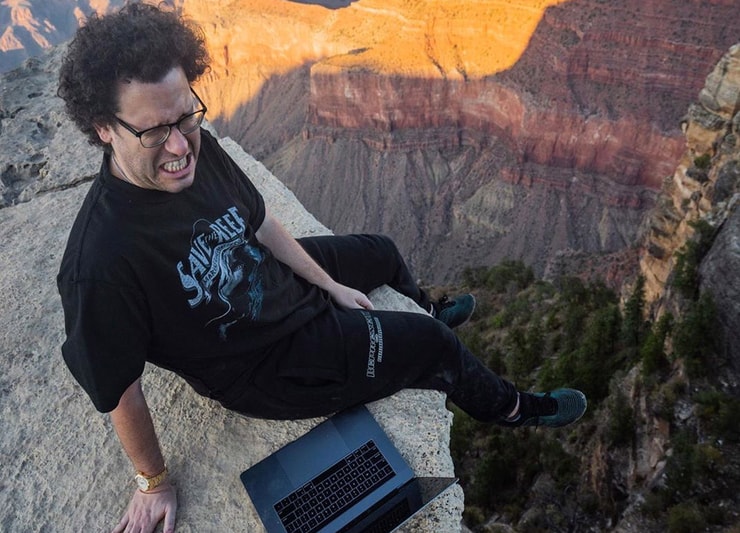The ticker symbol ICCT didn’t just move on Wednesday…
It SOARED.
Wrapping up the day at a hearty $12.28, doubling Tuesday’s closing price.
But the real fireworks ignited in the after-hours.
WOW $ICCT squeeeeeze to $29+ up from just $2/share 2 days ago LOL, you gotta love these supernovas, right?!?! To all the over-aggressive/over-confident shorts being decimated, I encourage you to read https://t.co/jv0kL0BsvN as I tried warning you, but you guys just don't listen!
— Timothy Sykes (@timothysykes) August 30, 2023
When I tweeted it, it had already surged past $29…and it didn’t stop there.
In fact, moments later it reached a staggering $42 per share.
Source: StocksToTrade
Now, picture this: You’ve shorted ICCT at $12…thinking it’s a baseless rally.
But a few hours later, you watch it fly near $40.
It’s moments like these that steered me away from short selling, and it’s the same reason why I tell my students to stay away from short selling.
But flip the script: How exhilarating would it be to buy a stock like ICCT as it’s going Supernova?
Today, I will dive into the mechanics of these Supernova stocks.
In addition, I’ll show you what drives them, how to possibly spot the next big mover, and the pitfalls short sellers often find themselves in.
Table of Contents
Mistake #1: Using Logic As The Main Driver
First off, ICCT was weird.
It did some funky conversion…
$ICCT seems the hunch was right and some brokers misapplied the R/S (which was a SPAC buying ICCT and applying an exchange ratio to legacy ICCT, and then that SPAC changing their ticker back to ICCT followed by the SPAC delisting- overly complicated)
Naked shorts covering today… https://t.co/kMXVpkyYQZ pic.twitter.com/LQGXAWVfAa
— Odd Diligence (@OddDiligence) August 29, 2023
I’m not a special situations trader, so I don’t understand exactly what they did.
Nonetheless, the stock tanked on Monday, hitting a low of $0.97.
Later that day, it clarified common stock trading, warrants, and preferred.
Every 29.84 shares of ICCT outstanding prior to the closing received one share of the combined company, an equivalent share price of $5.71 based on the August 25, 2023, close price of $0.19 per share for ICCT common stock.
It appeared someone messed up, and this thing should have been trading near $5.71.
The following day, it hit a high of $7.50…closing at $5.64.
Which is, more or less, near that August 25th price.
However, momentum traders got involved on Wednesday…and that’s when this thing just went crazy.
Then you have shorts who suddenly are special situation traders…saying this stock should be trading below $6.
Short sellers are so ignorant. They knew nothing about this company a few days ago, but now they explain how this weird conversion deal worked.
So they short…and short…and short.
The stock went up 117% by the end of Wednesday’s close.
And by Wednesday after-hours it was trading above $40!!!
Did the stock deserve to be trading that high?
Probably not…after all…nothing about the business fundamentally changed.
However, that’s not how trading works.
Price action rules over logic when you’re day trading.
Mistake #2 Failing To Manage Risk

Will ICCT be lower a few weeks from now?
Most likely.
But there’s an old saying on Wall Street: The Market Can Stay Irrational Longer Than You Can Stay Solvent.
In other words, you have to manage your risk.
Can you honestly say you have a risk management plan if you are shorting a stock at $5 and holding it while it goes to $10…$20…$30…or even $40.
Short sellers are always trying to pick up pennies in front of a steamroller.
And they got steamrolled in ICCT.
Psychologically, it’s hard to get out of a position when you know, in the long run, you will be right.
So instead of cutting losses quickly like I always preach…
They hold and pray…hoping that the stock doesn’t tick higher.
In their mind, they are thinking, I don’t want to cut my losses here, if I do, I will miss out on this great opportunity.
But that’s the problem with trading, a strategy you can’t risk manage.
Daily reminder that it's GREAT to ride longs where shorts are getting squeezed on junk $TIO $GTEC $ICCT $NAOV $VFS because 1.) they inadvertently help spike stocks better than promoters ever did and with far more volume too…see this video https://t.co/UzhNAvjbJN as it's DEAD ON… pic.twitter.com/w0ep4XfMnG
— Timothy Sykes (@timothysykes) August 30, 2023
Mistake #3: Being Stubborn
Over 71 million shares traded in ICCT on Wednesday.
If shorts didn’t recognize they were getting squeezed…then maybe it’s a good thing that some of them blew up…because trading isn’t for them.
You have to be willing to say you are wrong if you want long-term success at trading.
While the short thesis on ICCT makes sense…you need to acknowledge the price action.
When the stock is behaving a certain way, you need to be willing to adjust your strategy.
For example, I was dip-buying NAOV on Wednesday.
But I stopped doing that when the company announced a $5 million private placement. The fundamentals changed, and I no longer had an interest in the play.
When things change, you must adapt.
Being too rigid with any strategy is a recipe for disaster.
Mistake #4: Falling Victim to Herd Mentality

Misery loves company. That’s why short sellers are a tight group.
Each uptick drew momentum buyers in…causing shorts to cover.
Shorts, in this scenario, underestimated how the fear of missing out (FOMO) could worsen the squeeze.
You see, stocks like ICCT don’t always run…
But we recently had a monster squeeze in VFS…
The stock went from $11.61 to $93.
So momentum traders are looking for short squeezes.
And because they’ve been working, they’ll likely continue until they stop.
The trend is your friend, until it isn’t, right?
I teach my students to think independently.
If most traders lose money, why would you want to follow the herd?
Mistake #5: Ignoring Key Technical Levels

The one thing about ICCT is that it was up-trending nearly the whole day on Wednesday.
And since the stock was trading in uncharted territory…each breakout triggered a squeeze.
More momentum traders jumped in…and more shorts kept getting sucked in.
Short sellers often place stop orders around resistance levels, which occured multiple times throughout the day and after-hours sessions.
Not only that, the stock was extremely volatile, with super wide bid/ask spreads, which made it a nightmare for short sellers.
And unlike the day session, stocks don’t halt for volatility in the after-hours…which makes it extremely dangerous for a short seller.
Be Happy We Have Short Sellers

It might sound like I’m bashing short sellers in this post. But don’t get it twisted. Without them, we wouldn’t have so many great opportunities in the market.
Their broken logic and total disregard for risk management create some of the best plays out there.
My students and I thank them.
Speaking of students, how’s your trading going?
Did you crush this long ICCT?
If not, there’s a lot to learn from it.
Anyways, I want to help.
Every day, my team and I host live training workshops. We talk about stocks like ICCT and other stuff that’s moving markets.
We bring them to you at zero cost.




Leave a reply